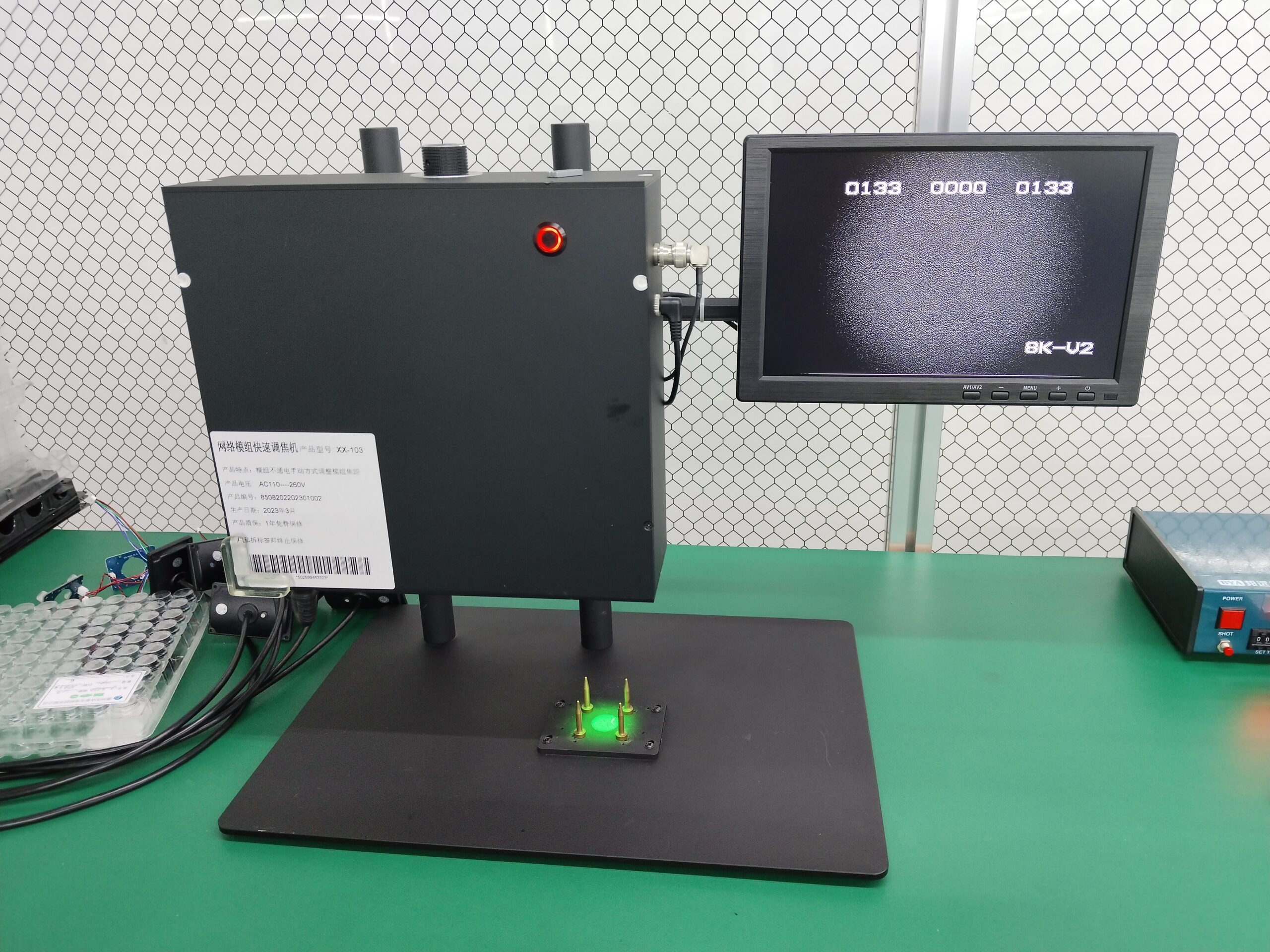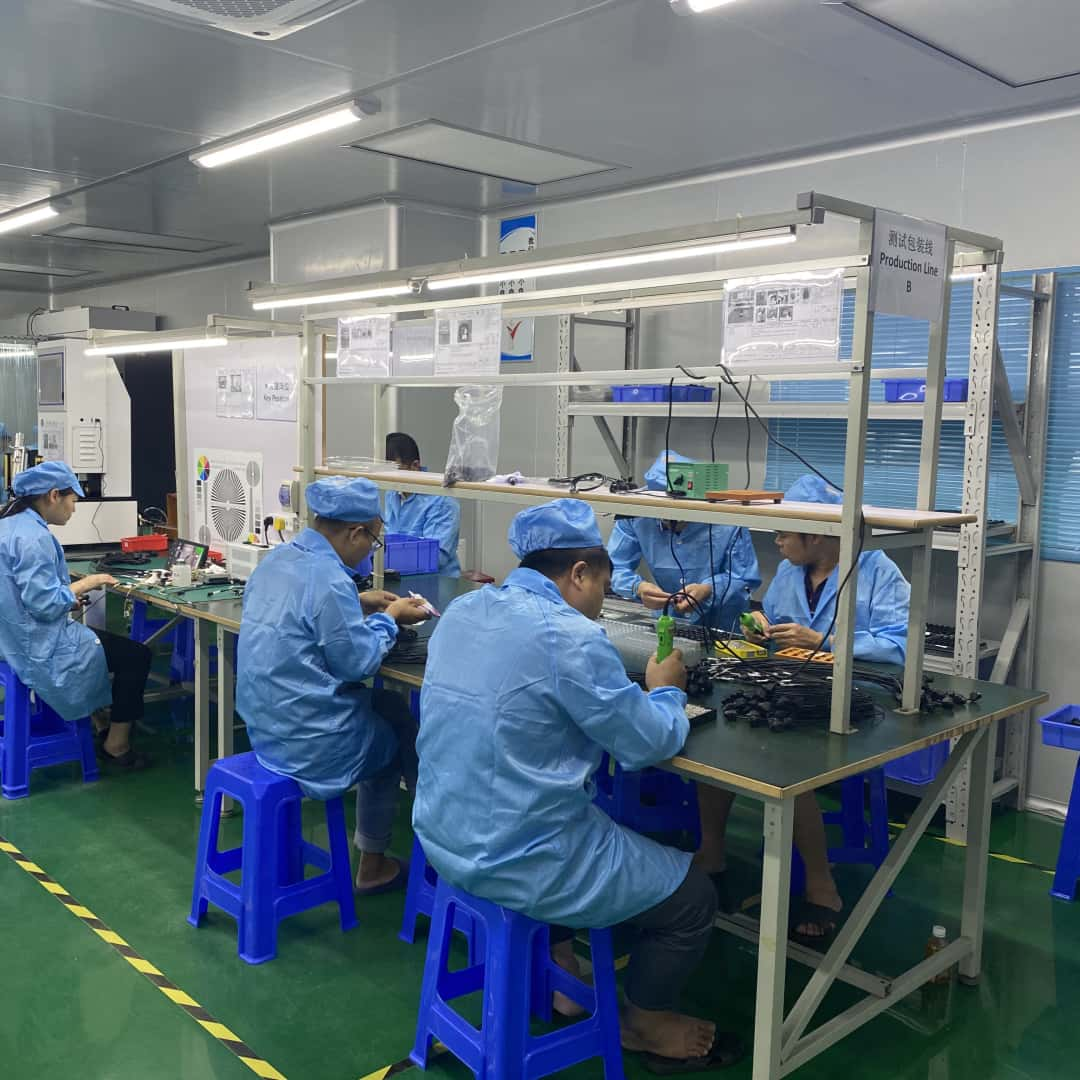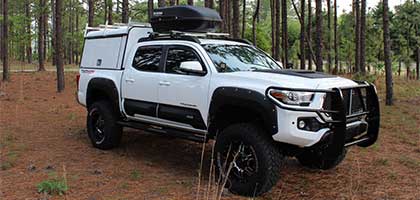Lvds Camera Automotive
- In-house R&D: Specialize in developing OEM-grade LVDS rearview cameras tailored to specific vehicle models.
- Custom Solutions: Design and engineer products to meet unique client requirements.
- Wide Compatibility: Successfully adapted for brands like Ford, Buick, Jeep, Mercedes-Benz, and BMW.
- OEM Standards: Deliver seamless integration, durability, and visual clarity matching original equipment quality.
- Flexibility: Rapidly adapt designs for new models or specialized customer needs.

Our lvds camera automotive Products
OEM LVDS Cameras viewing angles are designed to be in the original tailgate location. Raising or lowering the camera causes the image to not be compliant with FMVSS 111 requirements. Our factory can make with different housing to replace OEM LVDS cameras and work with FMVSS111

Rear camera relocation options for Chevrolet Silverado 1500-6500, Cab & Chassis, and Colorado trucks

Rear camera relocation options for Ford F150, Super Duty, Cab & Chassis, Ranger, and Maverick trucks

Rear camera relocation options for GMC Sierra 1500-6500, Cab & Chassis, and Canyon trucks
lvds camera automotive - Crystal Clear Imaging for Safer Driving
Advanced 720P/1080P HD Resolution, Wide Angle View, and Superior Durability for Ultimate Rearview Safety
| Parameter | Description |
|---|---|
|
Resolution
|
HD (720p), Full HD (1080p)
|
|
Frame Rate
|
30fps, 60fps (depends on specific application like video surveillance or real-time image processing)
|
|
Interface Standard
|
FAKRA,LVDS (Low-Voltage Differential Signaling), supports single-channel, dual-channel, or multi-channel
|
|
Data Rate
|
Typically 1 Gbps to several Gbps, depending on the resolution and frame rate
|
|
Operating Voltage
|
3.3V or 1.8V (typical in LVDS designs for low power consumption)
|
|
Number of Data Lanes
|
Single-channel (1 pair), dual-channel (2 pairs), or multi-channel (for higher bandwidth)
|
|
Image Sensor Type
|
CMOS (common for low power and high image quality), CCD (less common, but used in some high-end apps)
|
|
Operating Temperature
|
|
|
Signal-to-Noise Ratio (SNR)
|
|
|
Additional Features
|
Auto White Balance (AWB), High Dynamic Range (HDR), Low Light Performance, Image Stability
|
Key Features of Lvds Camera Automotive
High-Speed Data Transmission:
- LVDS supports the fast transfer of high-resolution video, making it ideal for real-time applications like parking assistance, surround-view systems, and lane departure warnings.
Low Power Consumption:
- The differential signaling approach minimizes power requirements, making LVDS cameras energy-efficient.
Resistance to Electromagnetic Interference (EMI):
- LVDS uses a differential pair of wires for signal transmission, providing strong immunity to noise and ensuring stable video quality even in electrically noisy environments, such as a vehicle’s engine bay.
Scalability for High-Resolution Video:
- LVDS cameras can handle HD and even 4K resolutions, which are critical for modern automotive vision systems.
Flexibility in System Design:
- LVDS cameras are compatible with various in-vehicle display systems and controllers, enabling manufacturers to integrate them into a wide range of designs.

lvds camera automotive Applications
Compatible with Any Vehicle Featuring an AHD-Compatible Screen for Easy Installation

Advanced Driver Assistance Systems (ADAS):
- LVDS cameras are essential for features like lane-keeping assist, adaptive cruise control, and pedestrian detection.

Surround-View Systems:
- Used for 360-degree view cameras that help drivers visualize the vehicle’s surroundings, improving safety during parking or tight maneuvers.

Rear-View and Front-View Cameras:
- Commonly found in vehicles for parking assistance and collision avoidance.

Driver Monitoring Systems:
- LVDS cameras can be used to monitor driver behavior, such as drowsiness or distraction.
Advantages of LVDS Cameras in Automotive
No matter the size of your project, DT-Camera delivers reliable, durable, and high-performance LVDS Cameras that meet your precise requirements. Get in touch with us today to discuss your OEM/ODM needs and take your business to the next level.

High Performance
Can deliver uncompressed, high-resolution video in real time.

Cost-Effective for High-Volume Manufacturing
Despite advanced capabilities, LVDS is relatively affordable for automotive use.

Robust and Reliable
Designed to operate in the challenging conditions of automotive environments, including high temperatures and vibrations.
Comparison with Other Camera Technologies

CVBS Cameras
While CVBS is more cost-effective, it offers limited resolution and speed compared to LVDS.

Ethernet Cameras
Automotive Ethernet offers more scalability but might have higher latency and cost.

MIPI Cameras
MIPI is ideal for in-vehicle connectivity but is generally used for shorter distances than LVDS.
Conclusion:
An LVDS camera is a key enabler of advanced automotive technologies, offering high-speed, low-power, and interference-resistant video transmission. As vehicles become smarter and more connected, LVDS cameras will continue to play a critical role in enhancing safety and the driving experience.
Custom Services lvds camera automotive
Custom Lvds Camera Automotive Solutions with OEM/ODM Options for Your Vehicle or Business
At DT-Camera, we understand that every vehicle and business has unique needs. That’s why we offer custom Lvds Camera Automotive solutions with flexible OEM/ODM options. Whether you’re looking to outfit a fleet of vehicles, create a bespoke solution for your brand, or develop a tailored backup camera system for your automotive business, we can help bring your vision to life.
What We Offer:
OEM Solutions: We work directly with vehicle manufacturers, distributors, and fleet operators to design and produce original equipment that integrates seamlessly with your vehicles. Our team ensures that all cameras meet the highest industry standards for performance and durability.
ODM Services: If you need a custom design for your brand, our ODM services allow you to tailor everything from the camera housing to the lens specifications, ensuring a unique product that reflects your brand’s identity.

Frequently Asked Questions
Here’s a list of Frequently Asked Questions (FAQs) LVDS Cameras in Automotive
LVDS (Low Voltage Differential Signaling) cameras are specialized automotive cameras that use LVDS technology for high-speed, low-power, and noise-resistant video transmission. They are commonly used in advanced driver-assistance systems (ADAS), rearview cameras, and other automotive applications requiring high-definition video.
LVDS cameras are designed to work in challenging automotive environments. They are highly durable and can operate under extreme temperatures, vibrations, and electromagnetic interference, ensuring reliability and longevity in the automotive sector.
Traditional automotive cameras often use single-ended signaling or analog systems, which are less efficient for high-speed, high-definition video transmission. LVDS cameras, by contrast, offer:
- Higher Data Rates: Enabling better video resolution and frame rates.
- Lower Power Consumption: Extending the life of vehicle electronics.
- Better Signal Integrity: Reducing the impact of electrical noise, making them more suitable for modern automotive systems.
LVDS cameras are compatible with most modern vehicles, especially those with ADAS or advanced multimedia systems. They can be integrated into existing vehicle platforms with the appropriate connectors and interfaces. However, some retrofitting or customization may be required for older vehicle models or specific systems.
LVDS cameras are built to last for the lifespan of the vehicle, which can be 10-15 years or more. With their robust design, they can handle the extreme conditions commonly found in automotive environments, including high humidity, dust, and temperature fluctuations.
By providing high-definition video feeds with low latency and superior reliability, LVDS cameras enhance the performance of safety systems like parking assistance, blind-spot monitoring, lane departure warnings, and collision avoidance systems. These technologies contribute to reducing accidents and improving overall driver safety.
LVDS cameras typically require minimal maintenance. Since they are designed for durability, they are often maintenance-free over their lifespan. However, ensuring that the lenses are clean and free from obstructions can help maintain the quality of the video feed. Regular system checks for integration with ADAS or other vehicle systems are also recommended.
Yes, LVDS cameras are suitable for both electric vehicles (EVs) and traditional combustion engine vehicles. Their low power consumption makes them especially advantageous for electric vehicles, where energy efficiency is critical.
Wholesale & Custom Orders
We value your inquiries and are here to assist you with any questions or concerns regarding our AHD Backup Cameras and services. Feel free to reach out to us through the following channels

The Ultimate Guide to Custom Packaging Solutions by DT-Camera
DT-Camera offers comprehensive custom packaging solutions designed to protect, showcase, and enhance your products. Whether for retail, OEM projects, or bulk orders, our packaging ensures your cameras arrive safely and impress your customers.
Table of Contents
1. LVDS Automotive Cameras: Gradual Dominance with Persistent Niche Roles for CVBS/AHD
LVDS cameras, offering 4K+ resolution and superior anti-interference (critical for EVs), will steadily replace CVBS/AHD in mid-to-high-end vehicles, driven by ADAS/autonomous driving demands and safety regulations (e.g., NCAP). While LVDS costs are projected to drop to ~20by2030(from30–50 today), CVBS (<5)andAHD(10–15) will persist in low-cost segments (e.g., entry-level cars, aftermarket) due to unmatched affordability. By 2030+, LVDS is expected to dominate >70% of new vehicles, but legacy systems will linger in price-sensitive markets, with adoption pace tied to LVDS cost reductions and OEM prioritization of advanced imaging.

2. LVDS Cameras in Automotive Applications
Sustained Growth Driven by Cost and Reliability
The development prospects for LVDS cameras in the automotive sector remain promising. With advantages in high-speed data transmission, robust anti-interference performance, and cost efficiency, LVDS is expected to remain the dominant interface for automotive cameras in the short term, particularly for ADAS and mid-to-low-end vehicles. While facing competition from high-speed alternatives like GMSL and Ethernet, LVDS will maintain its market position in the short-to-medium term due to its mature supply chain and competitive pricing. Long-term success will hinge on technological upgrades (e.g., increased bandwidth for higher-resolution sensors) and adaptability to evolving demands, ensuring relevance in cost-sensitive markets while addressing future automotive innovation needs.

3. Unlock the Future of Driving: BMW G-Series 360° Panorama with LVDS Camera Technology
In the ever-evolving world of automotive technology, the BMW G-Series stands at the forefront of luxury, innovation, and performance. A key feature in BMW’s cutting-edge driver assistance systems is the 360° panoramic camera system that offers unparalleled convenience, safety, and driving experience. At the heart of this system is the LVDS Camera Automotive—a sophisticated technology that ensures flawless image quality and seamless real-time data transmission.
Let’s explore how the LVDS Camera system in the BMW G-Series enhances driving safety, comfort, and precision, while setting new standards in automotive visual technology.
Experience Unmatched Visual Clarity with LVDS Camera Technology
The 360° Panorama Camera System in the BMW G-Series is powered by Low-Voltage Differential Signaling (LVDS), a high-speed data transmission technology designed for ultra-low power consumption and excellent data integrity. The use of LVDS ensures that the camera system operates smoothly and efficiently, providing high-definition visuals even in challenging environments.
Why LVDS Camera Automotive is Perfect for BMW G-Series:
High-Resolution Imaging: LVDS technology allows for HD (720p), Full HD (1080p), and even 4K (3840×2160) resolutions, ensuring that every detail of your surroundings is captured with stunning clarity. Whether you’re parking, reversing, or navigating tight spaces, the crisp imagery helps you make precise maneuvers.
Real-Time Data Transmission: LVDS provides high-speed data transfer rates of up to 1 Gbps or higher, allowing for real-time image rendering. This ensures a lag-free, smooth display of your surroundings on the BMW iDrive system, critical for applications like automatic parking or lane-keeping assist.
Low Power Consumption: With 3.3V or 1.8V power requirements, LVDS technology ensures minimal power consumption while maintaining excellent performance. This is especially important for maintaining efficiency in your vehicle’s electrical system.
Optimal Performance in All Conditions
BMW understands that real-world driving environments can present unpredictable challenges—sunlight glare, poor weather, low-light scenarios, and more. That’s why the BMW G-Series LVDS Camera Automotive system is designed to excel in varied lighting conditions, thanks to its High Dynamic Range (HDR) and low-light performance.
Enhanced Visibility: The LVDS camera technology’s ability to handle high contrast scenes ensures that you can clearly see both bright and dark areas in the image. This is especially useful when driving into bright sunlight or exiting a dark garage.
All-Weather Performance: The cameras are designed to function reliably in extreme temperatures, with the LVDS system capable of operating in environments ranging from -40°C to +85°C. No matter the weather, your panoramic camera system remains fully operational.
Perfect for Modern Luxury Vehicles
BMW’s commitment to luxury and performance is reflected in the sophisticated LVDS Camera system, which not only improves driving safety but also enhances the luxury experience. Features like Auto White Balance (AWB) and Image Stabilization allow the system to automatically adjust for lighting conditions and smooth out any vibrations or image distortions, ensuring a consistently high-quality image.
The system’s fish-eye lens correction feature also helps ensure that the panoramic view remains accurate, with no distortion at the edges of the image, which can often be an issue with traditional camera systems.

Why Choose LVDS Camera for Your BMW G-Series?
- Uncompromising Image Quality: From crystal-clear HD resolution to seamless stitching, LVDS cameras provide the highest-quality imagery.
- Enhanced Driving Experience: Whether you’re maneuvering in tight parking spaces or driving in complex urban environments, the system’s reliability and clarity offer an unparalleled driving experience.
- Built for BMW Drivers: The LVDS camera system integrates seamlessly with BMW’s iDrive system, giving you control over the 360° view directly from your dashboard.
- Future-Proof Technology: LVDS technology is not just a solution for today, but a sustainable, long-term investment in vehicle safety and visual systems.
Conclusion
With the integration of LVDS camera technology, the BMW G-Series 360° Panorama Camera System offers an unrivaled experience in terms of safety, performance, and convenience. BMW continues to lead the automotive world by adopting cutting-edge solutions like LVDS cameras, making driving safer, more intuitive, and ultimately more enjoyable.
Whether you’re upgrading your vehicle or considering a new BMW, the 360° LVDS Camera System is an essential feature that brings both luxury and advanced technology together for an unparalleled driving experience.
Experience the future of driving with BMW.
If you would like to learn more about how LVDS cameras can enhance your BMW G-Series driving experience or if you’re interested in exploring options for your vehicle, feel free to contact us today!
4. How comparing ahd vs cvbs backup camera?
When comparing AHD (Analog High Definition) and CVBS (Composite Video Baseband Signal) backup cameras, several key differences in image quality, signal transmission, and overall performance should be considered.
AHD vs CVBS Camera Comparison
Key Differences Overview
| Feature | AHD Camera | CVBS Camera |
|---|---|---|
| Resolution | 720P/1080P ✔️ | ≤480P ⚠️ |
| Signal Type | Analog HD (coaxial cable) | Composite Video Signal |
| Max Distance | ≤500m (stable transmission) | ≤100m (interference-prone) ⚠️ |
| Night Vision | 0.1 Lux low-light sensor | High noise, low clarity |
| Cost | 80–200 (premium models) | 20–50 (budget-friendly) 💰 |
Detailed Specifications
1. Image Quality
| Metric | AHD Camera | CVBS Camera |
|---|---|---|
| Resolution | 1280×720 / 1920×1080 | 640×480 |
| Color Depth | 24-bit true color | 16-bit color, prone to distortion |
| Low-Light Performance | 3D noise reduction + WDR support | No noise reduction, narrow dynamic range |
2. Installation & Compatibility
| Item | AHD Camera | CVBS Camera |
|---|---|---|
| Display Requirement | Requires AHD decoder/compatible display ⚠️ | Direct composite video input ✔️ |
| Cable Compatibility | Coaxial (RG59/RG6) | Coaxial (RG58) |
| System Upgrade Cost | Requires DVR replacement/converter | Plug-and-play, no upgrades needed |
Recommended Use Cases
AHD Cameras:
▶ 360° vehicle surround view systems
▶ High-definition backup cameras (≥720P)
▶ Smart traffic monitoring (license plate recognition)CVBS Cameras:
▶ Retrofit solutions for older vehicles
▶ Low-cost security surveillance
▶ Temporary construction vehicle monitoring
Summary of Key Differences:
| Feature | AHD Backup Camera | CVBS Backup Camera |
|---|---|---|
|
Resolution
|
High (720p or 1080p)
|
Low (480p or less)
|
|
Image Quality
|
Sharper, clearer, more detailed
|
Blurry, grainy, less detailed
|
|
Signal Transmission
|
Stable, long-distance, low loss
|
Prone to signal degradation and interference
|
|
Night Vision
|
Superior, clearer at night
|
Poorer in low light
|
|
Installation
|
Requires AHD-compatible monitor
|
Works with standard monitors
|
|
Cost
|
More expensive
|
More affordable
|
|
Compatibility
|
Needs AHD monitor
|
Compatible with most standard systems
|
|
Use Case
|
Best for high-quality systems
|
Suitable for basic backup needs
|
Conclusion:
- If you need higher resolution, better image quality, and superior performance (especially at night), AHD backup cameras are the better choice.
- If you’re working with an older system or have budget constraints, a CVBS backup camera will provide a cost-effective solution, though with lower image quality.
If you’re building a new system or upgrading an existing one, investing in AHD would likely provide a better overall experience.

Request Quote Now !
Our proficient engineers and designers are ready to partner with you in developing the ultimate personalized shipping experience.



